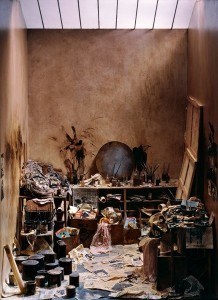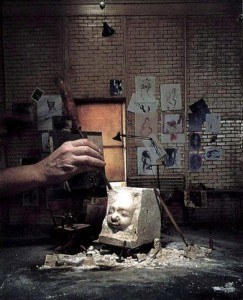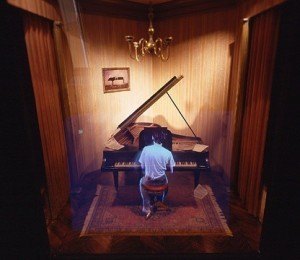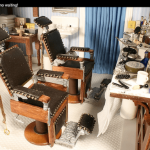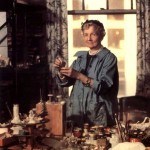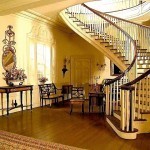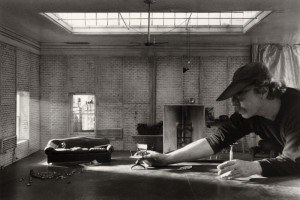
Charles Matton Boxes
Charles Matton considered his Boxes to be enclosures for the recreation of life. He described his concept this way: “I create two kinds of boxes: those whose purpose is to recreate an atmosphere that has delighted me, a memory whose existence I wish to perpetuate; and the more objective pieces that are the result of a detailed examination of the ‘realistic truth’ of a certain place.”
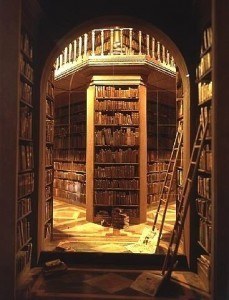
Representational
Some enclosures are recognizable from photographs, such as the studios of Vermeer, Bacon, Rembrandt, Velasquez, Giacometti, Hopper, and Courbet. There is a library dedicated to James Joyce and a replica of Freud’s study.
Other Enclosures are ‘magic and metaphysical boxes” from Matton’s imagination, many using modern multimedia techniques.
Magic and Metaphysical
The Poisson d’Or depicts a music room with a grand piano, on which is projected the ghostly image of a young man performing Debussy’s Goldfish. The player is Matton’s son Jules, an accomplished classical pianist.
1:7 Scale
At a scale of about 1/7th of their original size, the replicas are much bigger than the average dollhouse or architectural model. The viewer is given the weird sense they could almost enter these overgrown rooms. Matton used a variety of materials, including cast and carved resin, wood, paper, plaster, and glass. One-way mirrors and light were used for maximum effect; projection equipment to bring the Box alive.
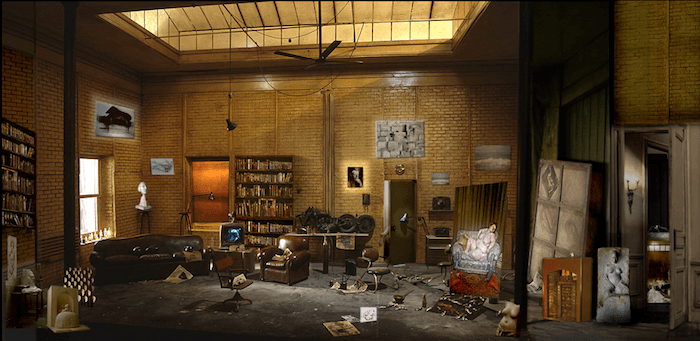
Worldwide Exhibitions
Matton’s works have been exhibited in a number of French museums, most notably at the Pompidou. There have also been exhibitions in New York, the Forum in Los Angeles, as well as in Germany and England. His wife Sylvie, and a group known as The Circle of Friends of Charles Matton continue to bring attention to the work of this painter, sculptor, draftsman, photographer, filmmaker, and writer.
My favorite works are those which brought all these talents together to create imaginative miniature rooms. boxes, enclosures, whatever genre you choose to label them.
Patrick Owens, with Susan Downing


